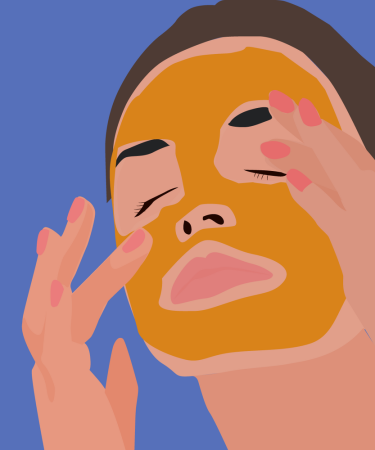We may earn revenue from the products available on this page and participate in affiliate programs.
Renée Rouleau would like you to be very careful before you pick at your face.
So much so that the celebrity esthetician and skin care expert—and queen of conquering acne—has created a kit and step-by-step directions for every single zit situation that could arise. And while I wish you a blemish-free life, you should keep this guide handy so you know exactly what to do next time an unwanted spot appears.
Know the Difference
There are three general types of acne: Cysts are under-the-skin bumps that rarely surface; DO NOT pick these, they will not surface. Papule zits are usually pink or red and inflamed, but do not have a whitehead; picking at a blemish when a whitehead isn’t present will only cause more injury to already inflamed skin. And pustule zits are your classic painful red bumps with whiteheads formed at the surface of the skin; there is a time and place to pick this. Read on…
There is a Cycle
“Every blemish has a cycle to how it wants to heal itself and what it wants to do,” says Rouleau. “And the mistake people make is ‘Oh, I have a blemish? Let me just kill it and dry it.’ Well, that’s the worst thing you do. If you apply a harsh, drying treatment the moment a blemish appears, skin cells immediately dry out. This greatly impairs your body’s natural healing process, since the infection has not yet come to the surface.” Oh, and even greater news: dry skin on top of a bump only creates a longer lasting blemish with more damage to the skin tissue.
Think Before You Act
I personally have stopped popping my zits all together. Yes, that zit is annoying and embarrassing to walk around with, but even more annoying is the zit scar that lasts for weeks afterwards. Rouleau breaks down the science of this: “Your blemish cycle is usually seven days, but it’s usually six weeks of the discolor mark [that results when you improperly picking a zit].”
Okay, I’ve almost stopped picking my zits all together…
“There is a time and place for when you want to help a zit get out,” says Rouleau. “A) No one wants to walk around with a whitehead on their face. And B) If it wants to come out, help it along at the right time.”
Help Mother Nature
“You always want to work with Mother Nature,” says Rouleau. “Be patient and let the natural healing processes do their thing.”
Kitting Me
“Number one thing people get wrong is they light it on fire, they put battery acid on it, and they are just making it worse. For years, I was just explaining to each person what to do, so I started this Zit Care Kit with step by step instructions and the products needed.”
The kit has all four products mentioned below, and tools to professionally pick a zit. And also, this very helpful step-by-step guide to assure zits are quickly put at bay:
-
Step 1:
When any type of blemish first appears (cyst, papule, or pustule), apply a treatment that diminishes inflammation within the pores. Rouleau’s Anti Cyst Treatment is great at calming inflammation without the drying effect. (Seriously, we’re not just saying that, it’s super brilliant.) During the day, apply a treatment that kills bacteria, like Daytime Blemish Gel.
-
Step 2:
For cysts (bumps that rarely surface), continue using an anti-inflammation treatment nightly until it disappears. For non-cysts, once you see a visible whitehead, leave the blemish alone, and use something like the Daytime Blemish Gel twice daily (morning and night).
-
Step 3:
When the infection is close to the surface and looks easily squeezable, on clean skin hold a warm, damp washcloth to the affected area for two minutes.
-
Step 4:
With the skin moist from the washcloth, pierce the skin with a lancet straight down into the center of the blemish to create an opening. (The lancet is part of the Zit Care Kit.)
-
Step 5:
Put one finger cot onto each forefinger or simply wrap fingers in tissue.
-
Step 6:
Position your fingers at various angles then squeeze the blemish until the infection is released. (Seeing blood and a clear liquid is normal.) If nothing comes out after three tries, leave the blemish alone and wait another day. Continue using a bacteria-killing treatment, like the Daytime Blemish Gel morning and evening.
-
Step 7:
Once the infection is successfully extracted, apply a spot treatment, like Night Time Spot Lotion with a cotton swab.
-
Step 8:
Continue to use the spot treatment and daytime bacteria-killing gel until the blemish has fully healed.
-
Step 9:
When a scab is no longer present and you are left with a discolored mark, apply a fading gel, like Post-Breakout Fading Gel, every other night until the scar is gone.
Lastly: Yet Another Reason To Wear Sunscreen
“Pigment cells stay active when the skin is exposed to UV light. Wearing sunscreen daily helps calm melanin activity to expedite the fading of blemish scars.”
Get more skincare tips:
Read This Before You Hop on a Plane This Week Why You Should Include Vitamin C In Your Skincare Regime The Best Beauty Hacks Our Editors Swear By
Learn to love your inbox again—sign up for Domino’s daily email.







